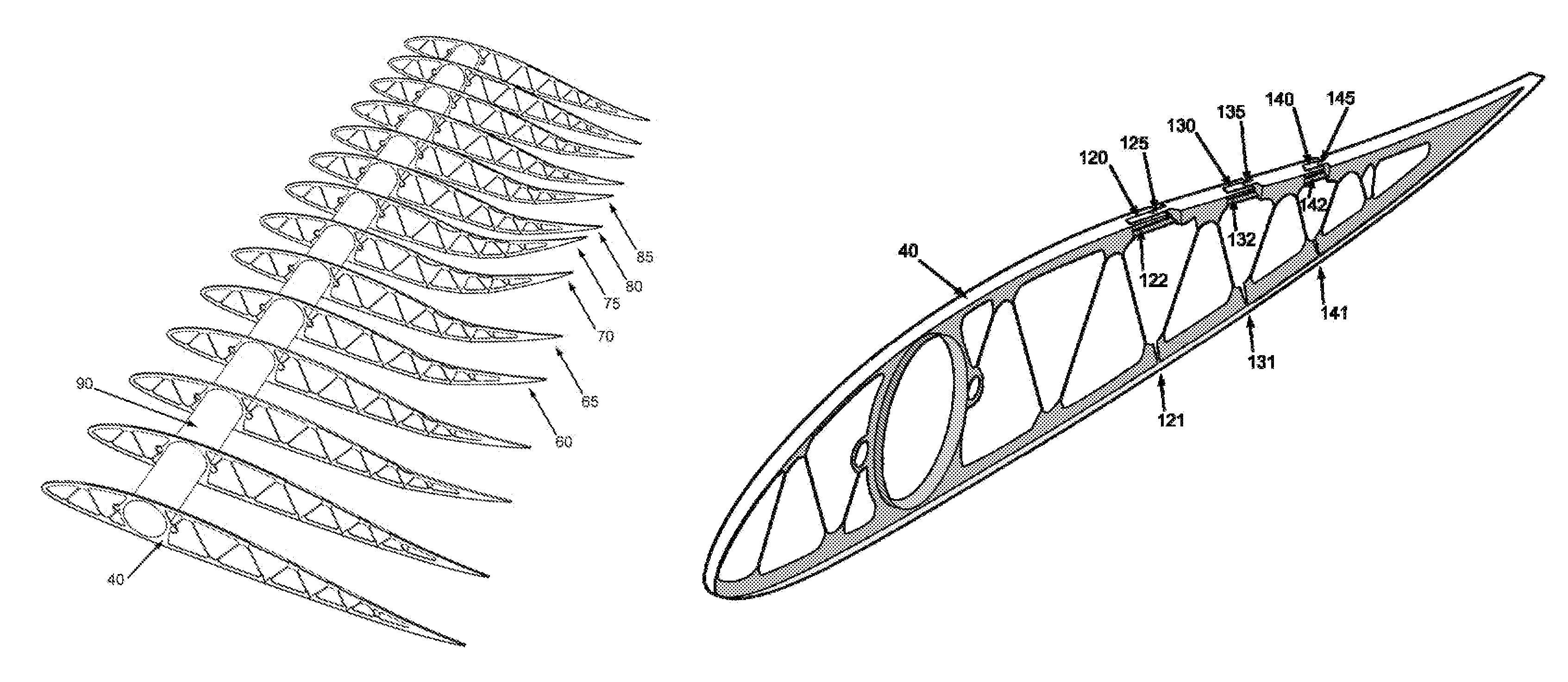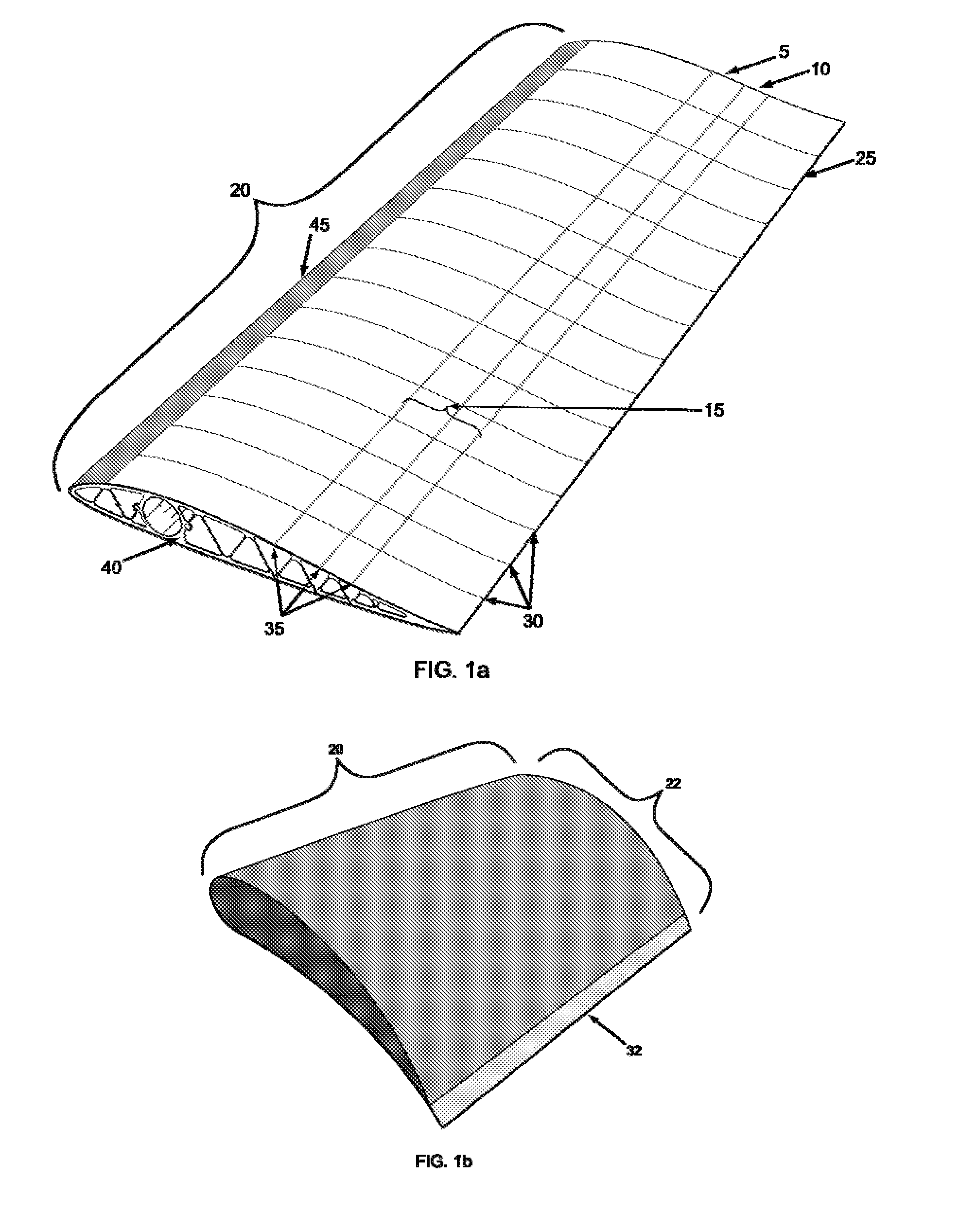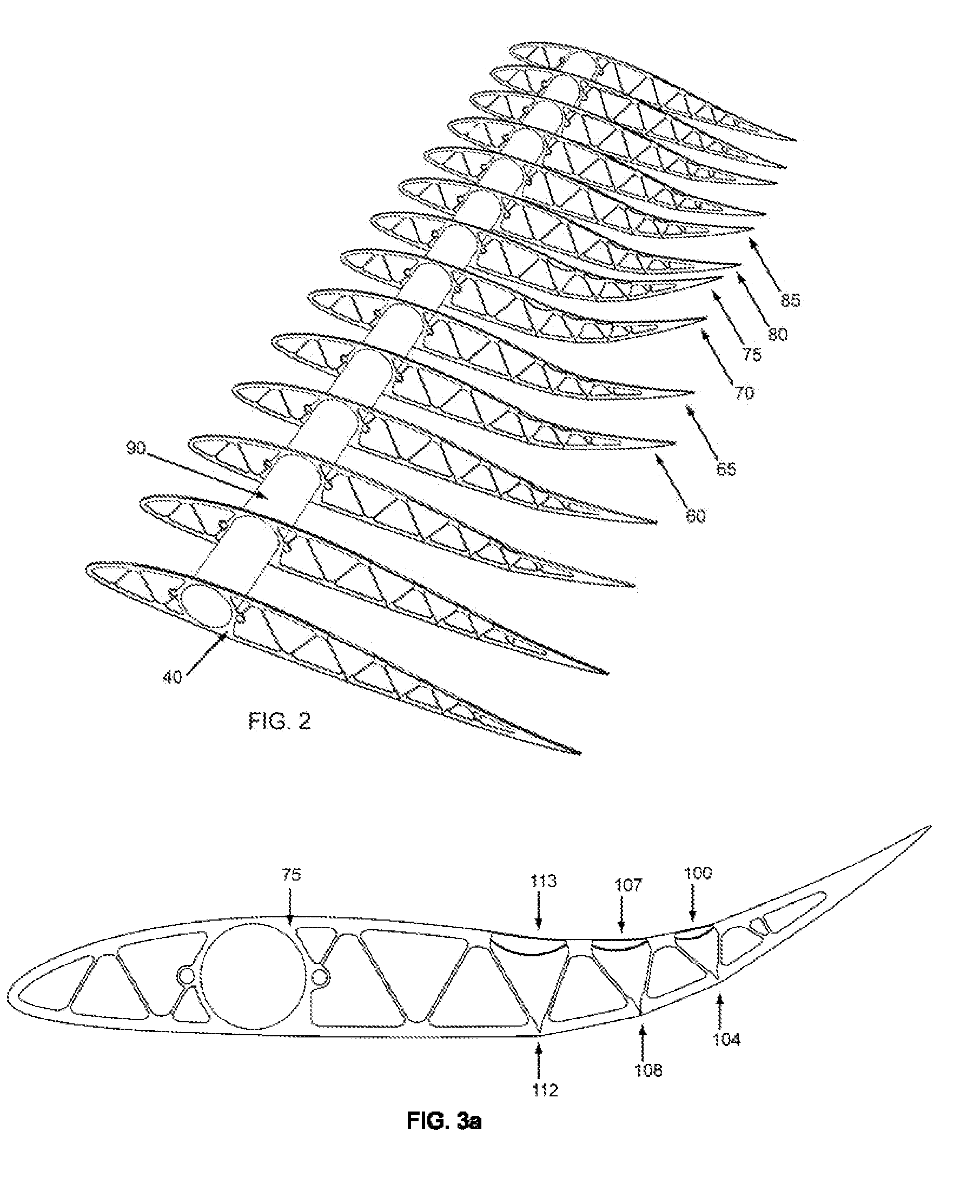Conventional mechanisms that result in the geometric changes that enable operation over multiple mission segments, such as ailerons, elevators, rudders, flaps and slats, are normally part of control systems that ensure the vehicle will be able to operate within a desired
flight envelope, but the implementation of these systems does not typically result in a design that can continually respond and adapt to changing environmental or aerodynamic conditions in the most efficient manner.
Morphing wings for flight control bring new challenges to the design of control laws for flight.
This means that there is likely never going to be a single solution for a
morphing aircraft, and the technology employed will be vastly different depending on the application required.
Previously, this improvement was at the expense of increased weight and complexity, and the
performance improvement must account for this.
Prior art in both of these categories, shows that these medium to large-scale changes are obtained with complex and sophisticated
mechanical devices, significantly increasing the installation and maintenance costs as well as the structural weight of the
airframe.
There are many challenges in the design of
morphing aircraft: the integrity of compliant structures needs to be ensured, the
system should be designed so the required actuation force is realizable, the skin has to be designed to give a smooth aerodynamic surface yet support the aerodynamic loads, the
design process should be extended to encompass multiple flight regimes, engines need to be designed for efficient low and high speed operation, and control systems will have to cope with highly coupled control effectors.
One way of doing this is to mitigate the effects of gust conditions, therefore reducing the
design load requirements, resulting in lighter structures and a reduced structural
mass fraction, which results in a
lower wing loading.
Prior active approaches do not offer the degree of
shape control, or the degree of tailorability in structural design to control the aerodynamic loads specific to the HALE aircraft application.
The weight of the active approaches also precludes their use in HALE platforms due to the increased weight and complexity of the actuation and control systems.
Furthermore, the passive approaches described in prior art typically result in a linear deflection curve, whereas the currently claimed approach offers a highly nonlinear, stepwise response to aerodynamic loads in addition to a high degree of tailorability.
Current design approaches incorporate gust load estimations in the structural
sizing, resulting in higher structural weights and potential
structural failure if unpredictable flight conditions are experienced.
The effect of the gust load is to increase the ultimate design loads that the HALE structure must withstand, therefore increasing the
sizing of the individual structural components and increasing structural weight.
Shape control can be accomplished in one of two ways, passively or actively, but for the case of HALE aircraft, the needed low wing loadings further preclude the use of
active systems due to the complexity of the control systems required and the added weight of distributed actuators for
shape control.
HALE aircraft are a relatively new
breed of aircraft that until recently, have not received the level of attention and challenging design requirements as those associated with other aircraft.
Each of these approaches is valid in its own right, but each one introduces a complexity in structure design and fabrication that may not result in the desired weight savings; however, little information is available regarding the scope of the work and the details of the various approaches due to the competitive nature of these projects.
However, the
control system and materials used are still significantly heavier than the currently presented devices and does not allow for a significant
shape change in the wing design during flight.
Yet all of these methods are not as successful in alleviating gust loads, either due to the complexity of the design or the failure to establish a significant reduction in the
mass fraction of the wing.
Bak has a bend / twist
coupling, which means that the deflections are going to be limited via the stiffness of the structures while maintaining the same load path.
This is purely flight controls and not really an “adaptive” wing.
This active approach still requires significant actuation means and does not address the
reduced mass fraction or improved performances that the currently presented devices do.
Separating the flow between channel openings upstream of the outboard ailerons and control surfaces may render these control surfaces ineffective.
The
system is also at greater risk for failure as the channels can clog with airborne debris or
ice accretion from captured condensation or rainwater.
Thermoset resins, for example, polyesters, are liquids that react with a catalyst to form a
solid, and cannot be returned to their liquid states, and therefore, cannot be reshaped without destroying the
polymer networks.
SMA would be more difficult to use for most applications because SMAs do not have the ease in changing the
activation temperature as do SMPs, and SMAs are limited to low maximum strain values.
SMAs would also have issues with galvanic reactions with other metals, which would lead to long-term
instability.
The current supply chain for SMAs is currently not consistent as well.
Like any material, they will yield or fail when limits are exceeded.
This problem is of great concern because of the widespread and intensive use in modern society of polymers and
polymer composites in product components.
This behavior does not facilitate the support of loads by a structure.
This limits their column strength and encourages their collapse upon reaching a threshold pressure.
While the design elements of Zingher are designed to buckle they are also designed to provide no support to any structural members causing them to buckle.
This lack of support is the principal reason why engineers and architects do not design structural elements to buckle.
Still other designs for buckling beam springs are not compatible with an array
sheet structure and not compatible with fabrication like a printed circuit.
Thus, while the prior art has proposed systems for reducing
wind gust loads, such systems have not come into practical use.
Namely, since the wind gusts causes very rapid and sudden variations in the loads applied to the wings, the sensors must react very rapidly and precisely, and the active measures such as actuation of control surfaces to counteract such wind gusts loads must be similarly rapid.
However, from current trends in this research area, it is clearly evident that the practical realization of a
morphing structure is a particularly demanding goal with substantial effort still required.
 Login to View More
Login to View More  Login to View More
Login to View More 


